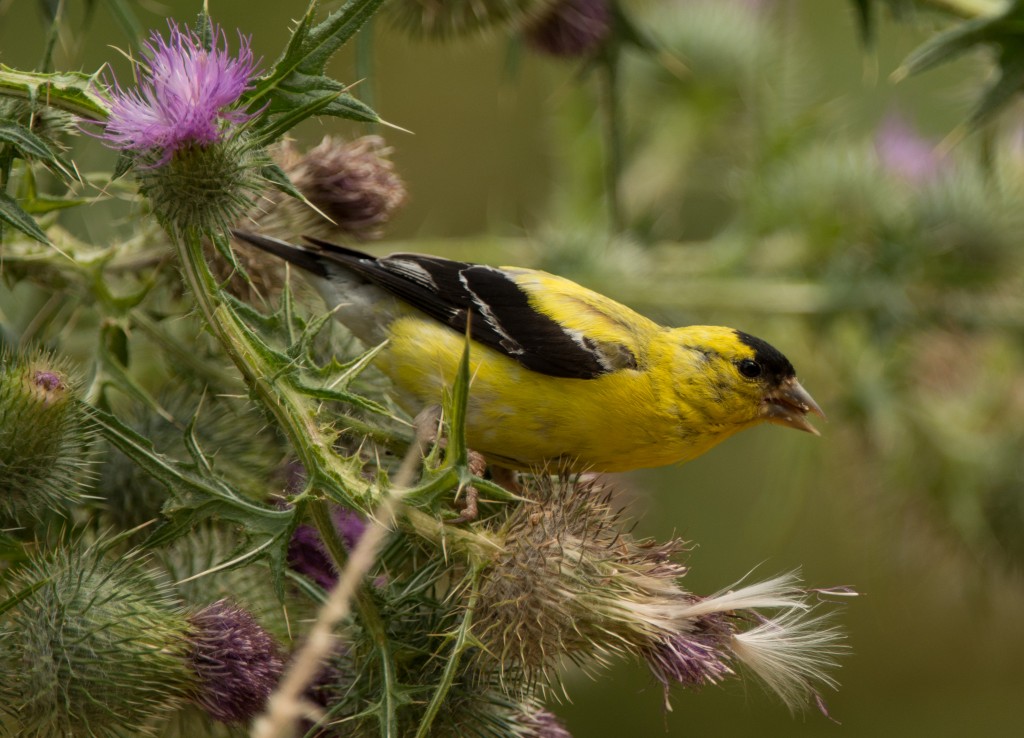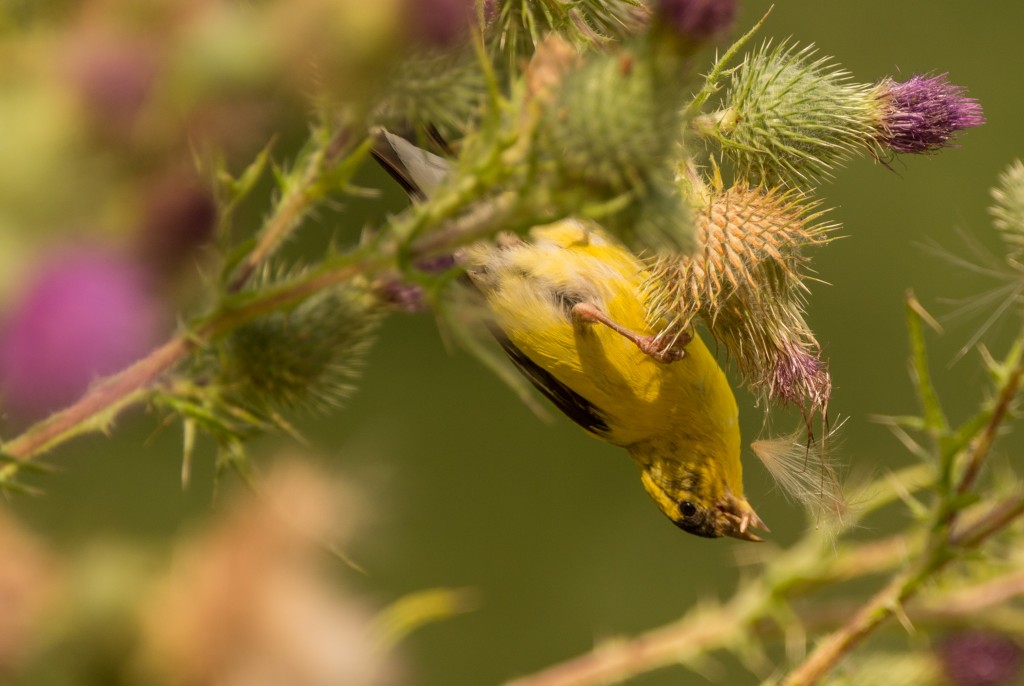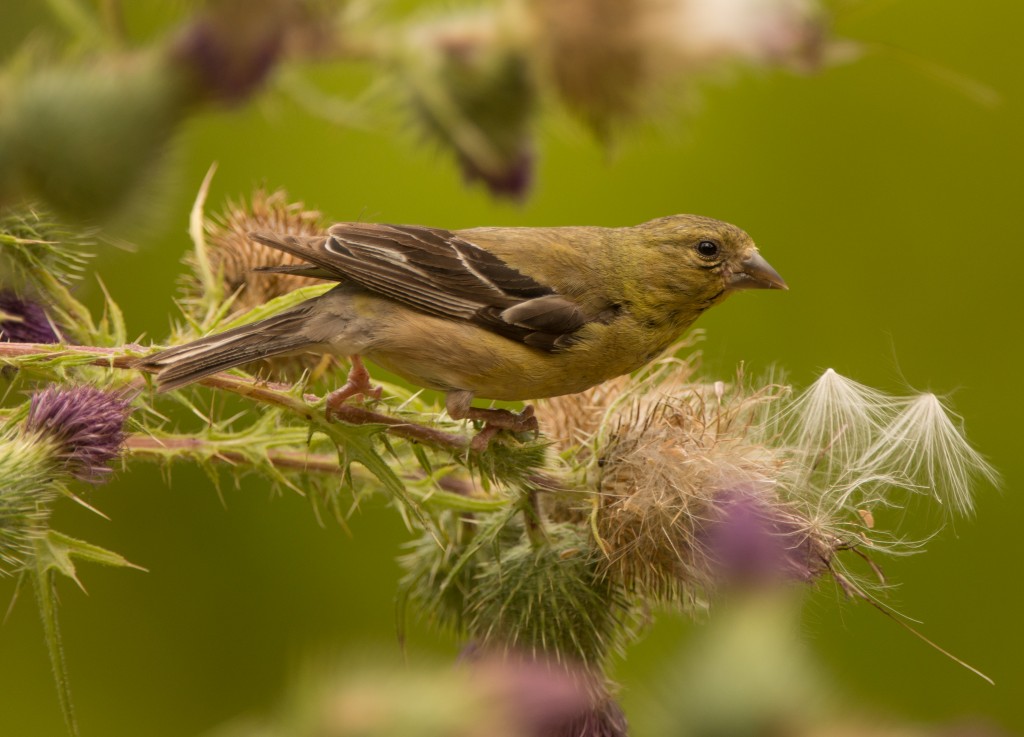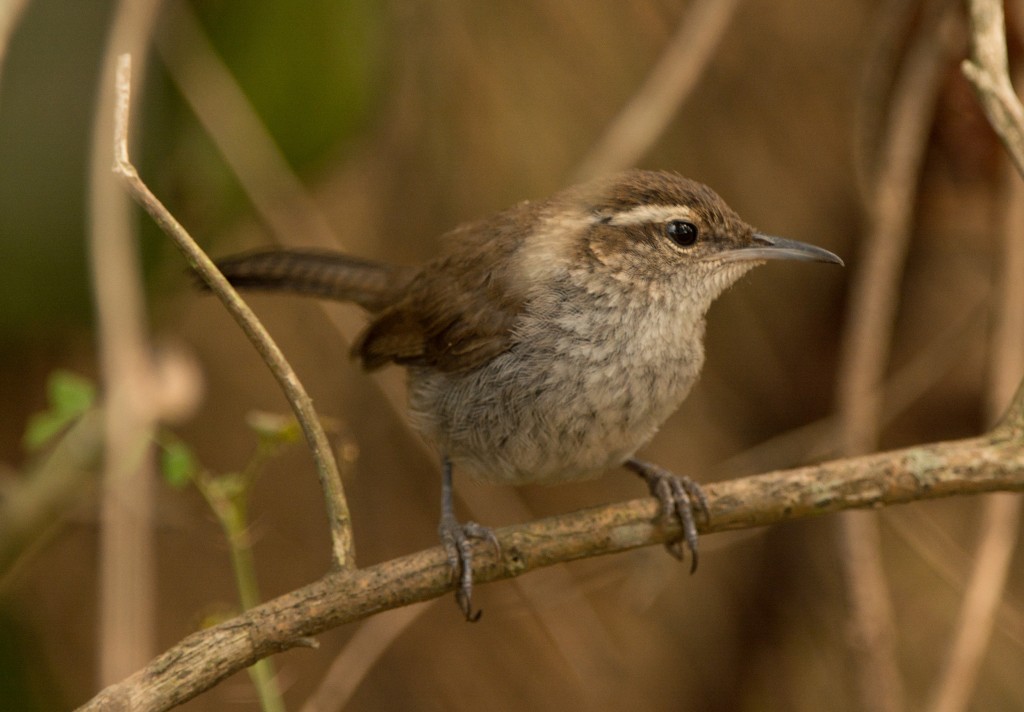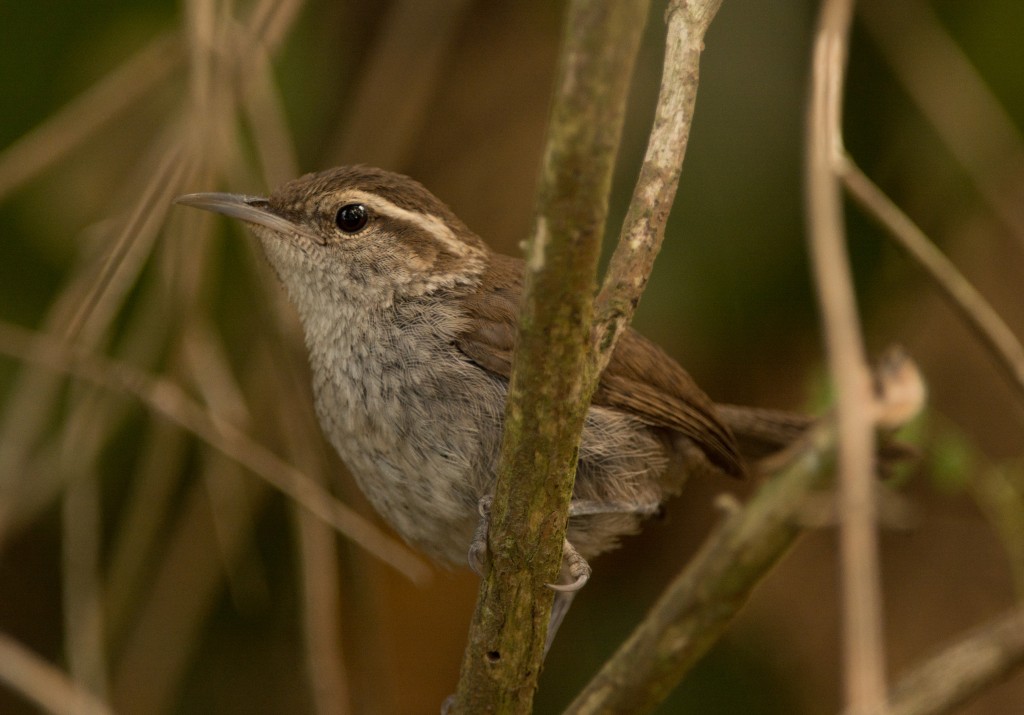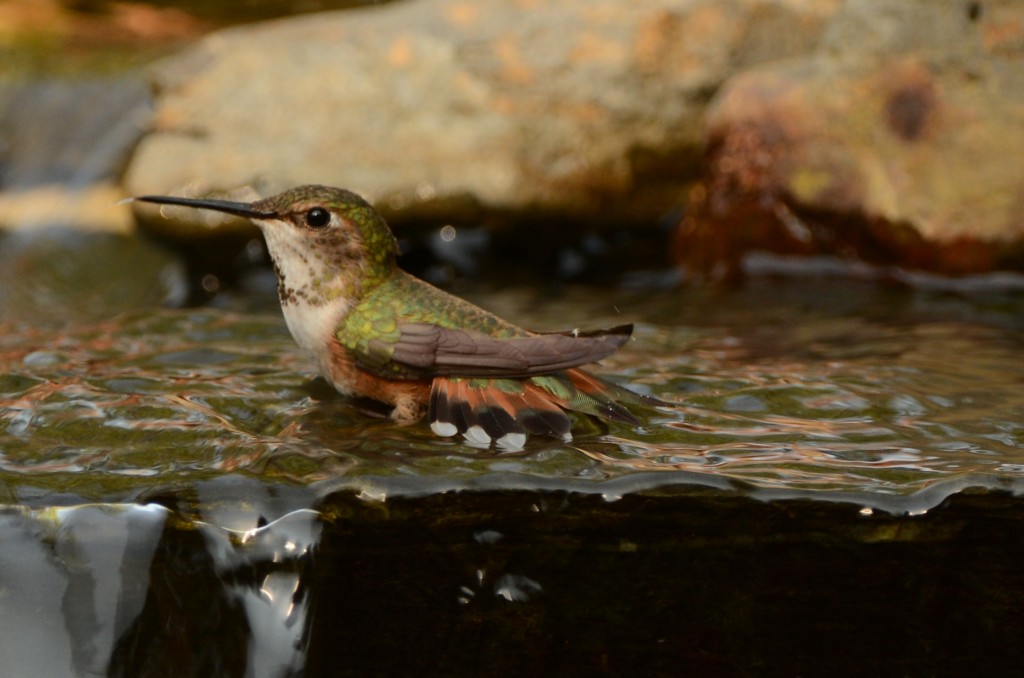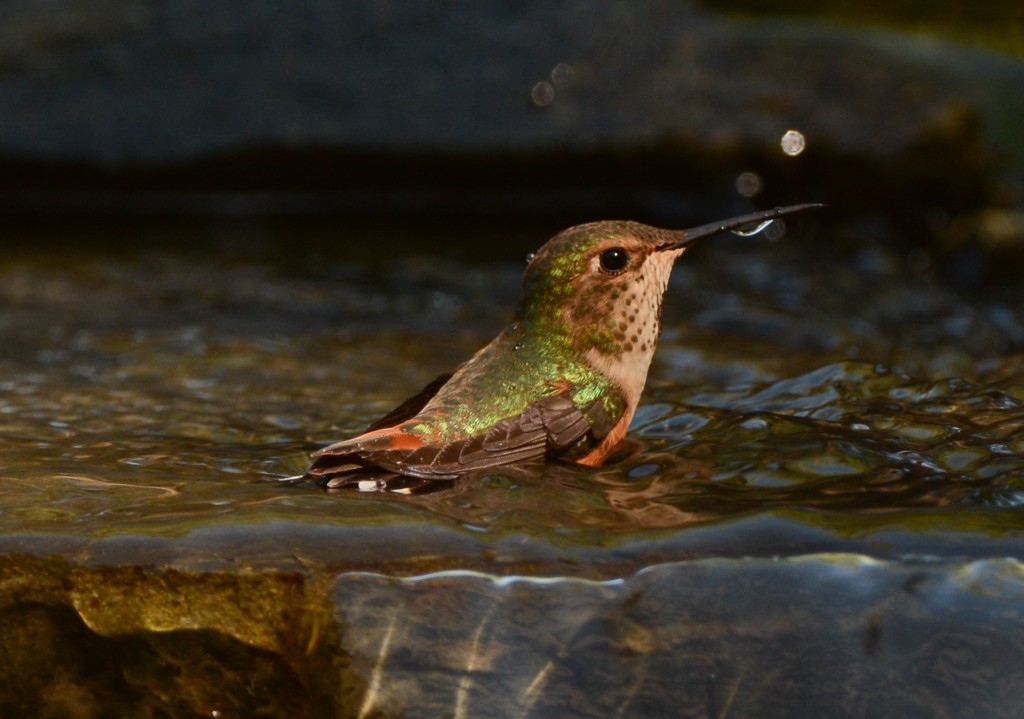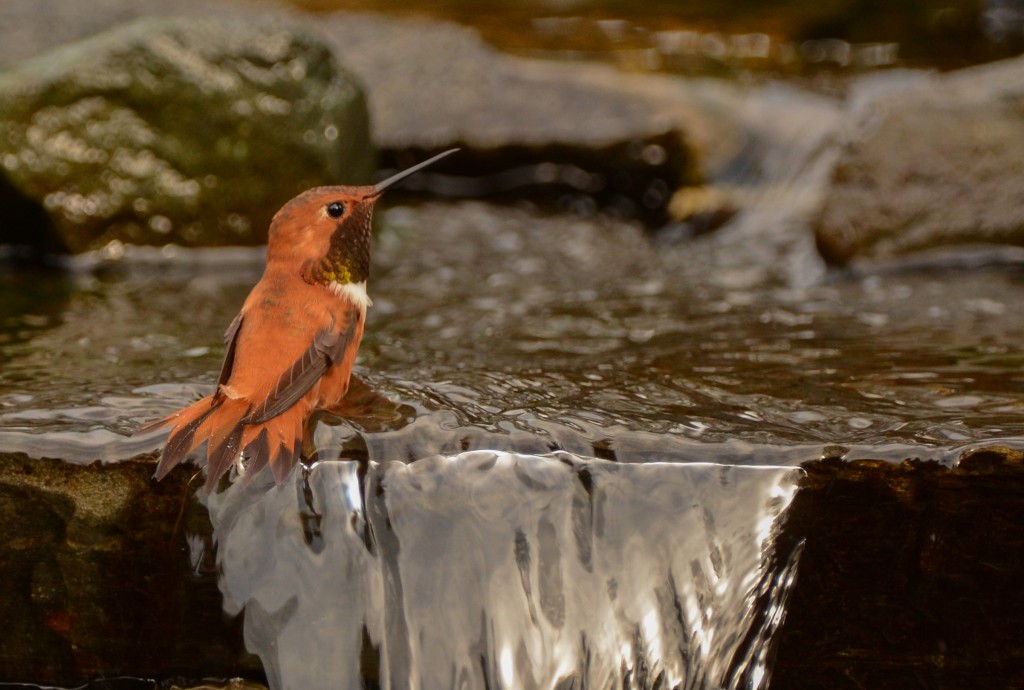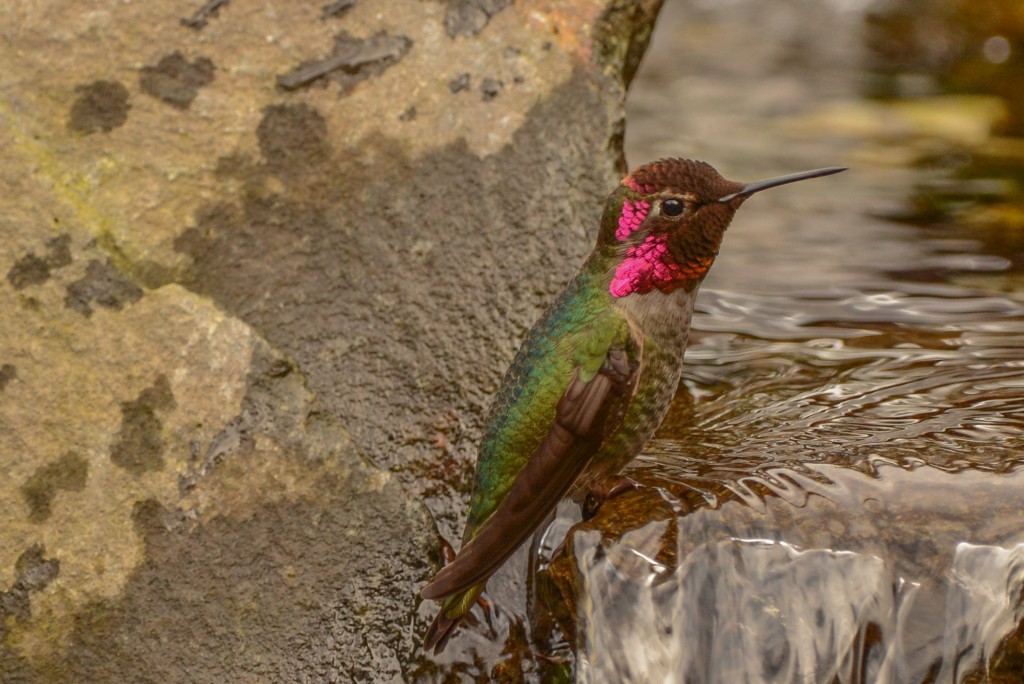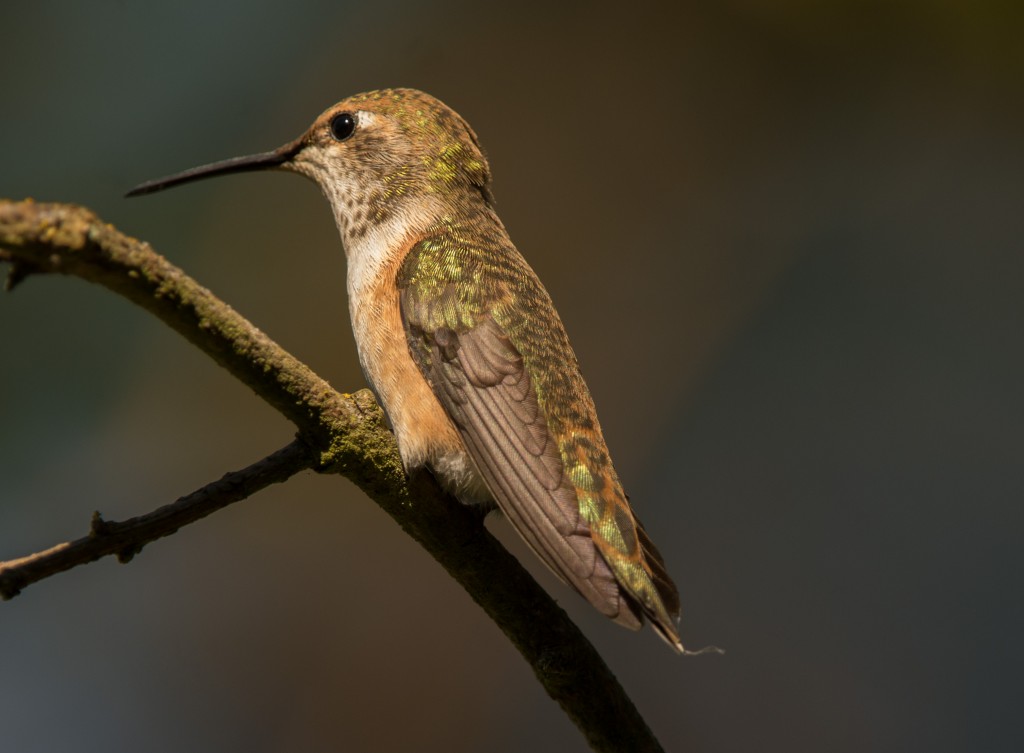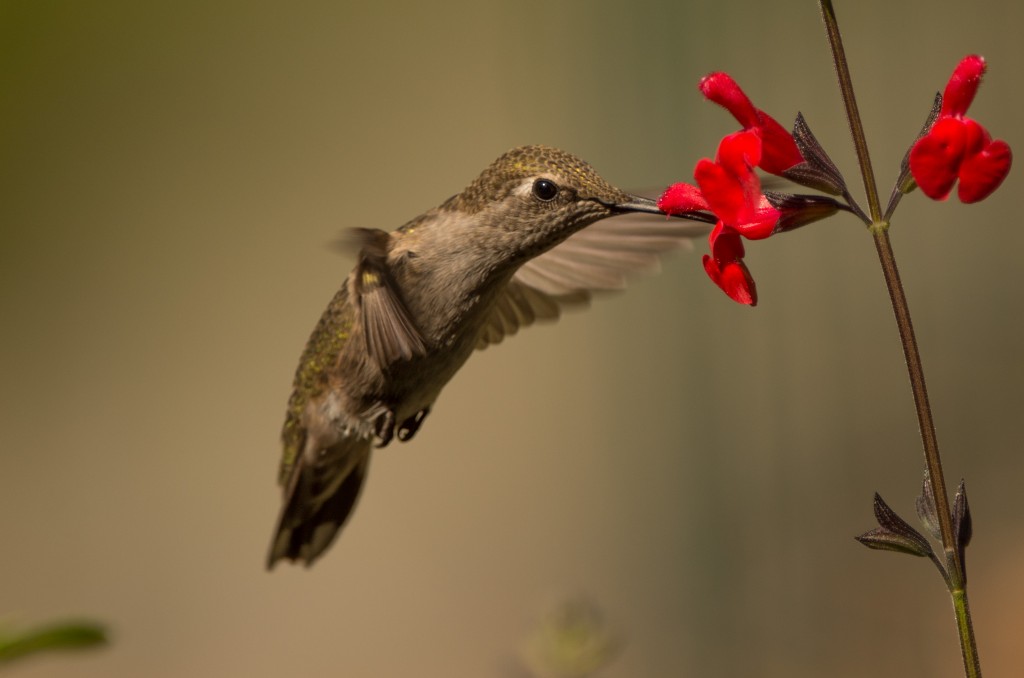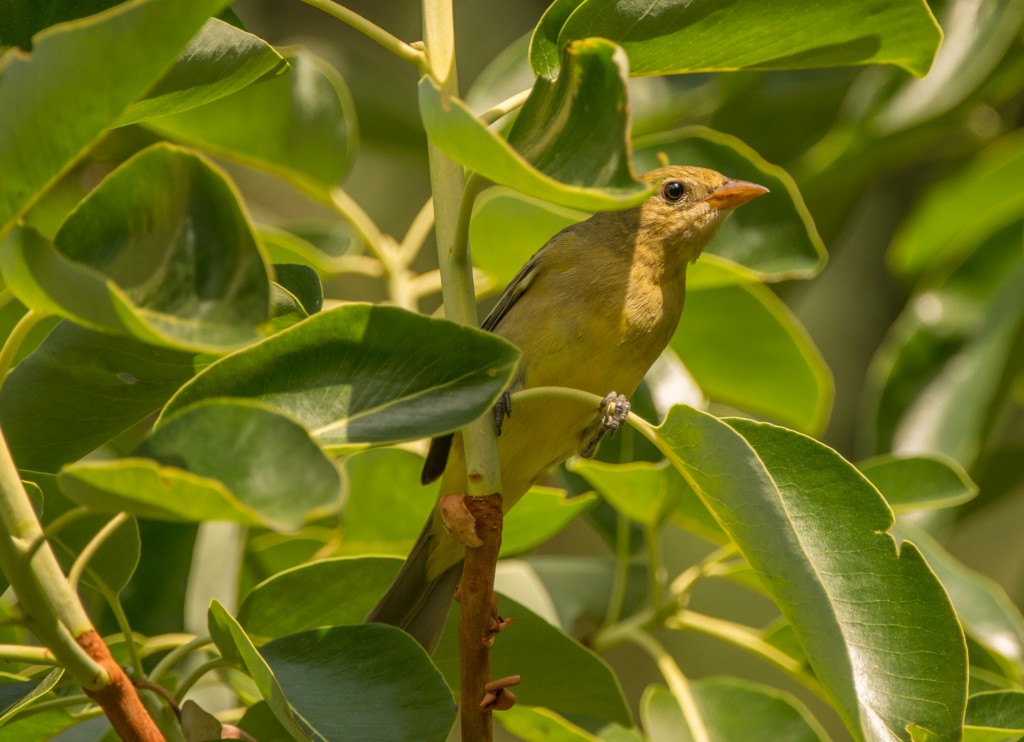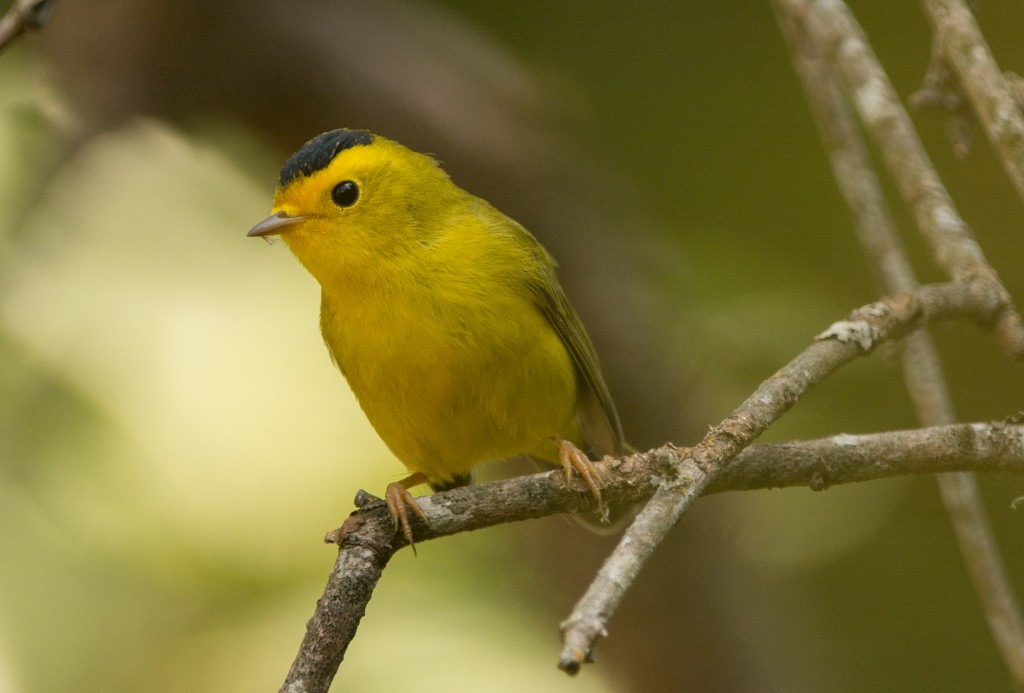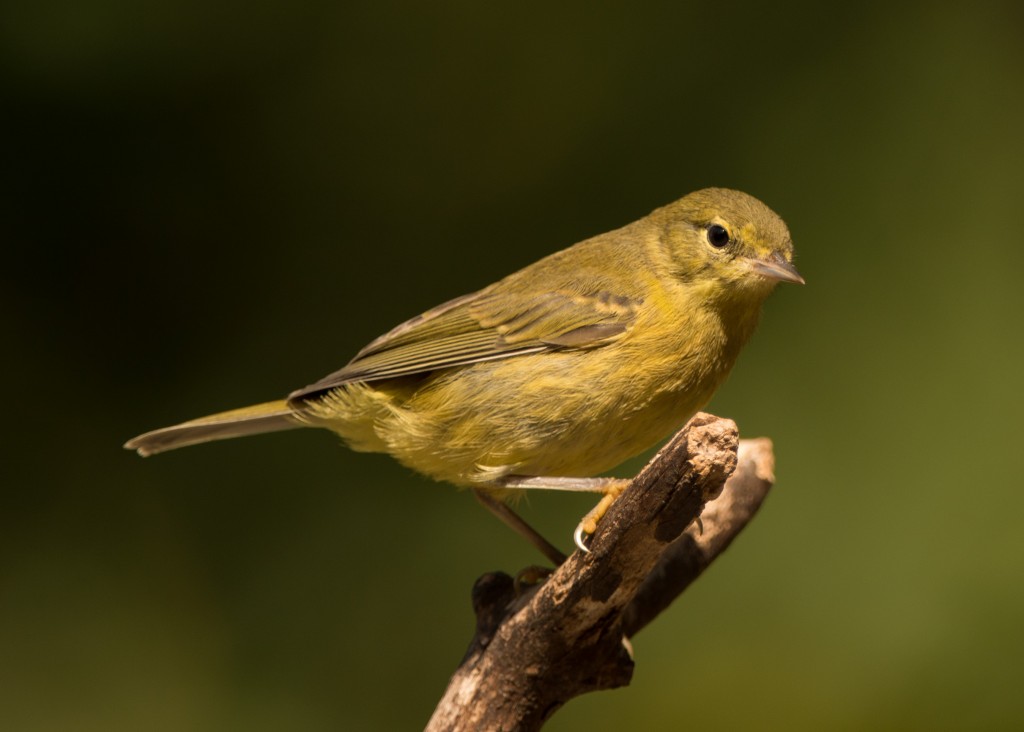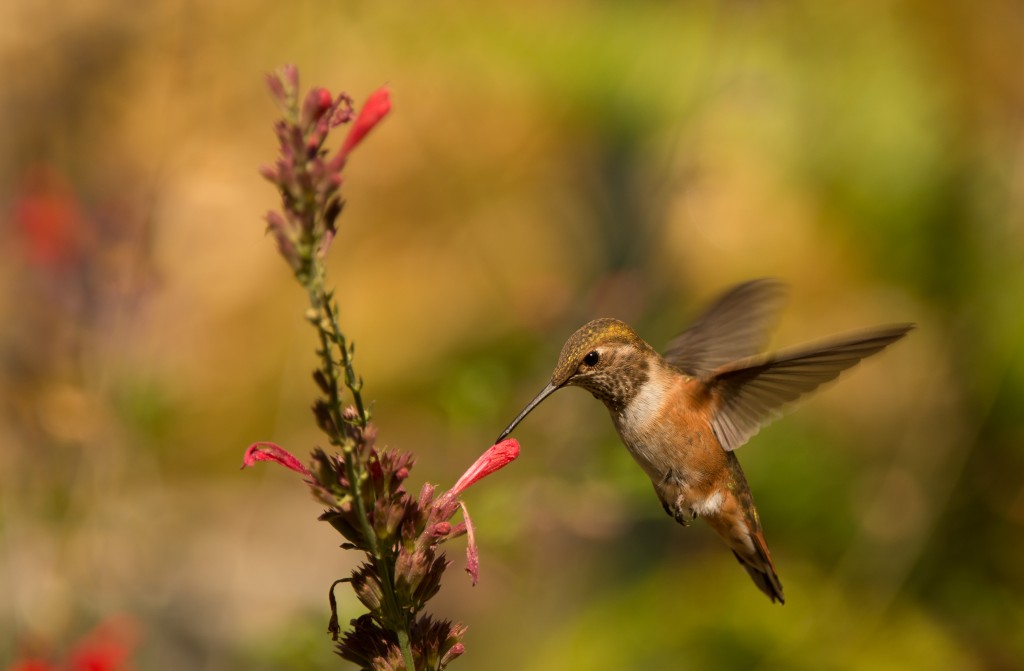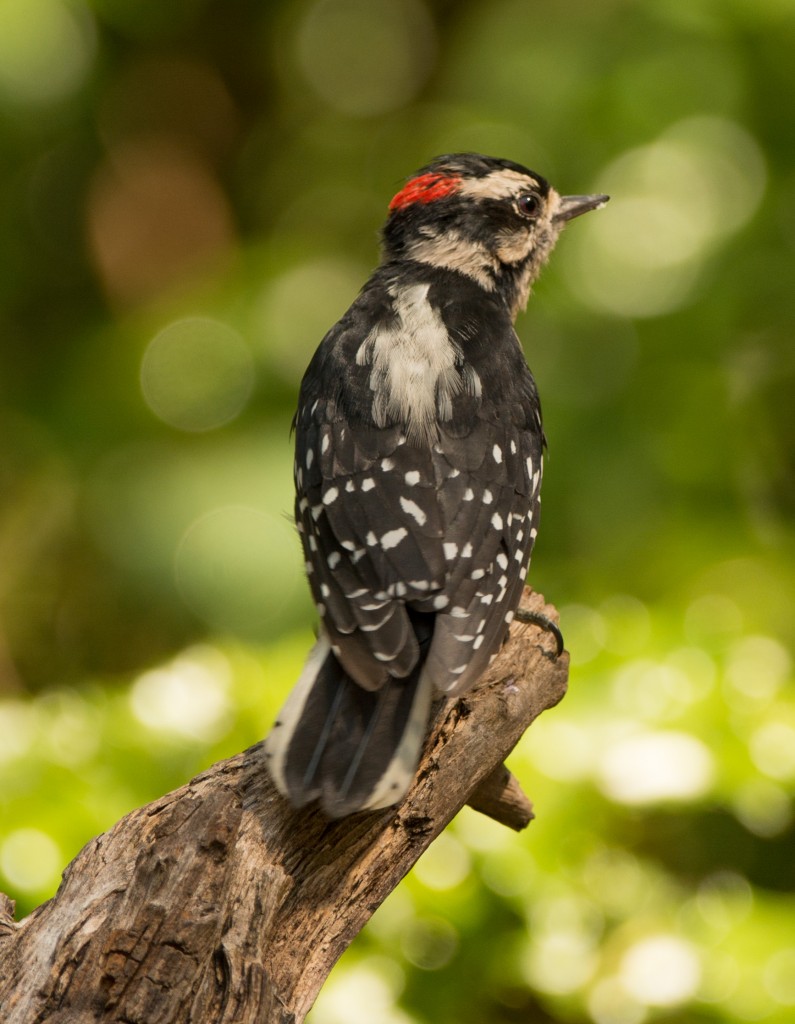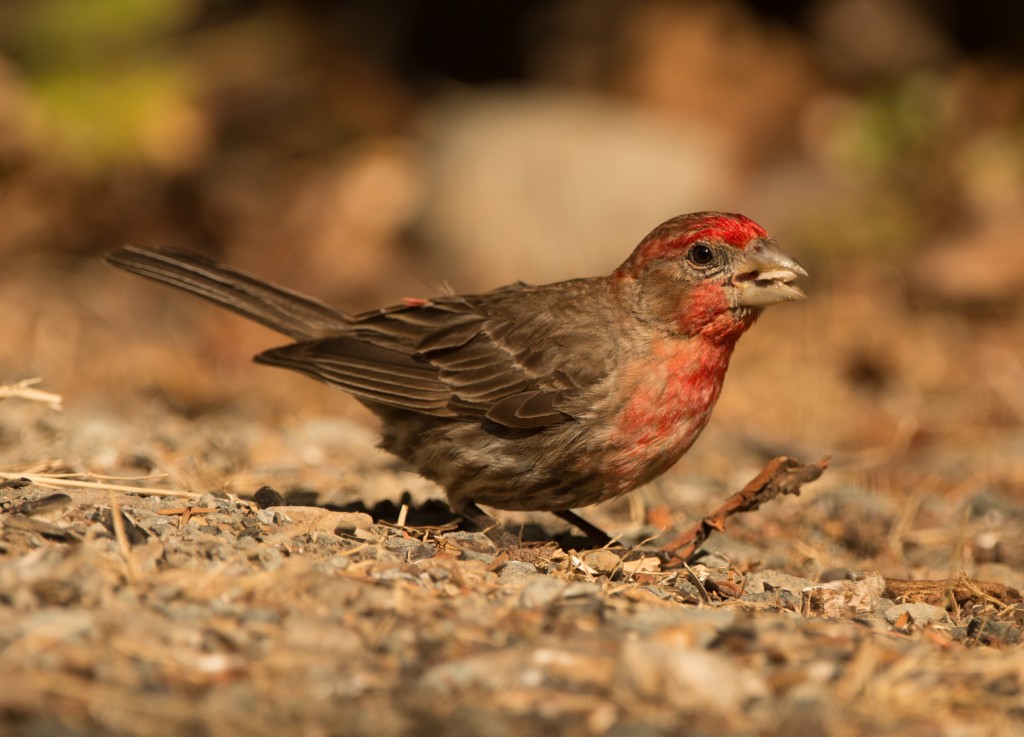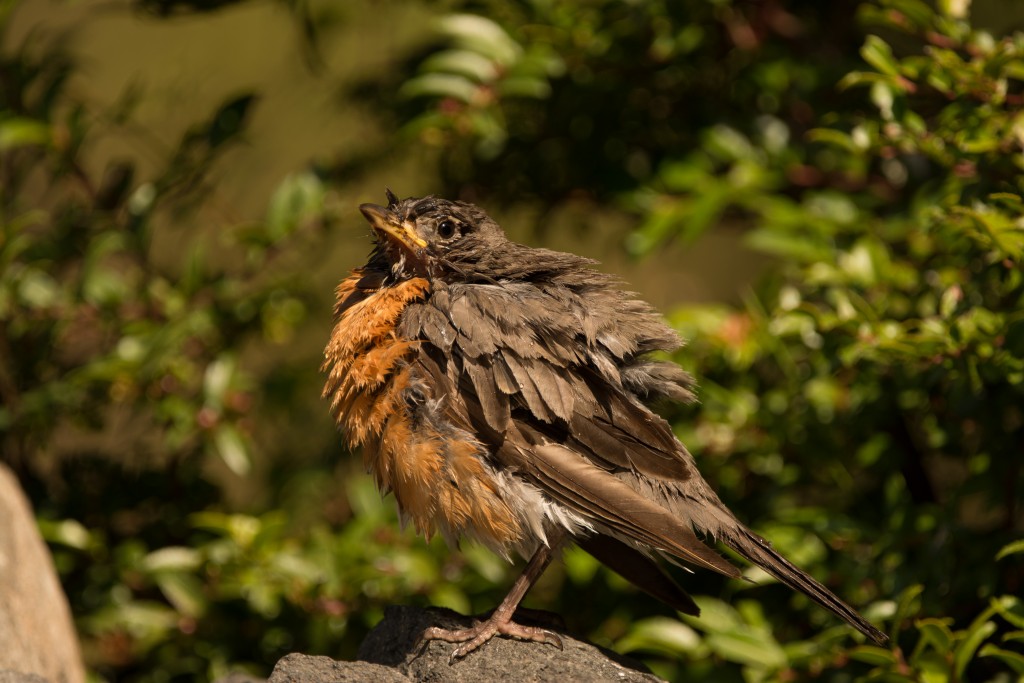On August 5 I was observing/photographing birds in the yard when a juvenile (female) Brown-headed cowbird flew down next to the watercourse. I took a couple of photographs of it…
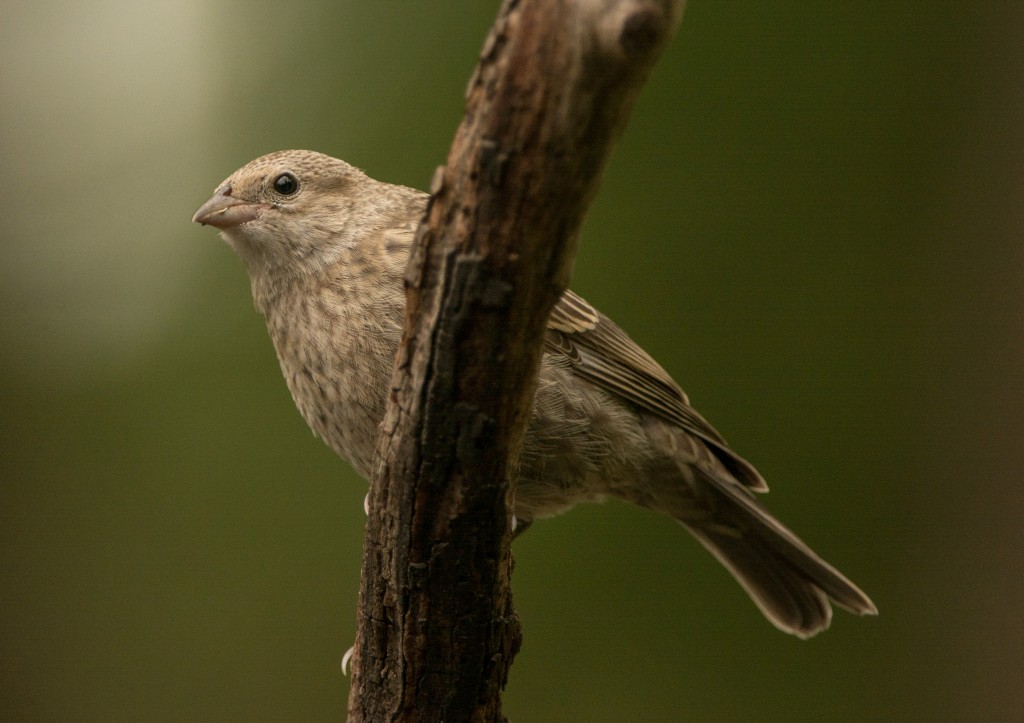
and then as I was looking through my viewfinder another bird appeared in the frame. It was a White-crowned sparrow and it proceeded to feed the young cowbird. This is the second breeding season in a row that White-crowned sparrows have raised a cowbird. The sad thing about this is that this White-crowned sparrow may be sealing its doom for the following breeding season.
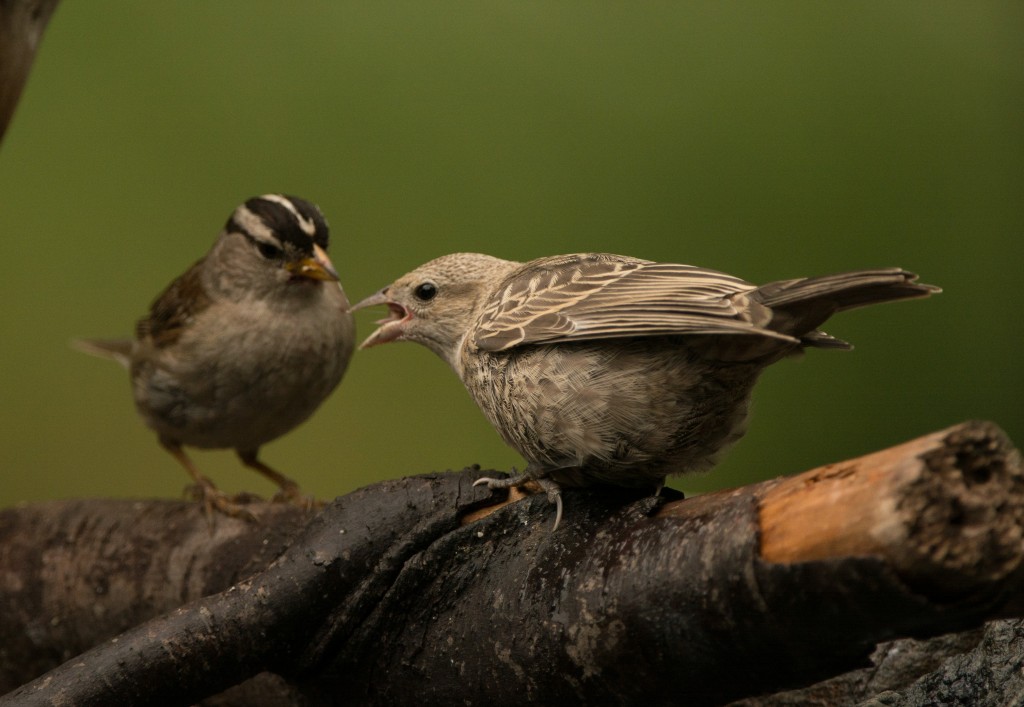
And along the same vein, I was watching a male House finch as it flew into one of the madrone trees. A small group of juvenile American goldfinches flew onto limbs in the general area, and one of the juveniles settled about a foot from the finch.
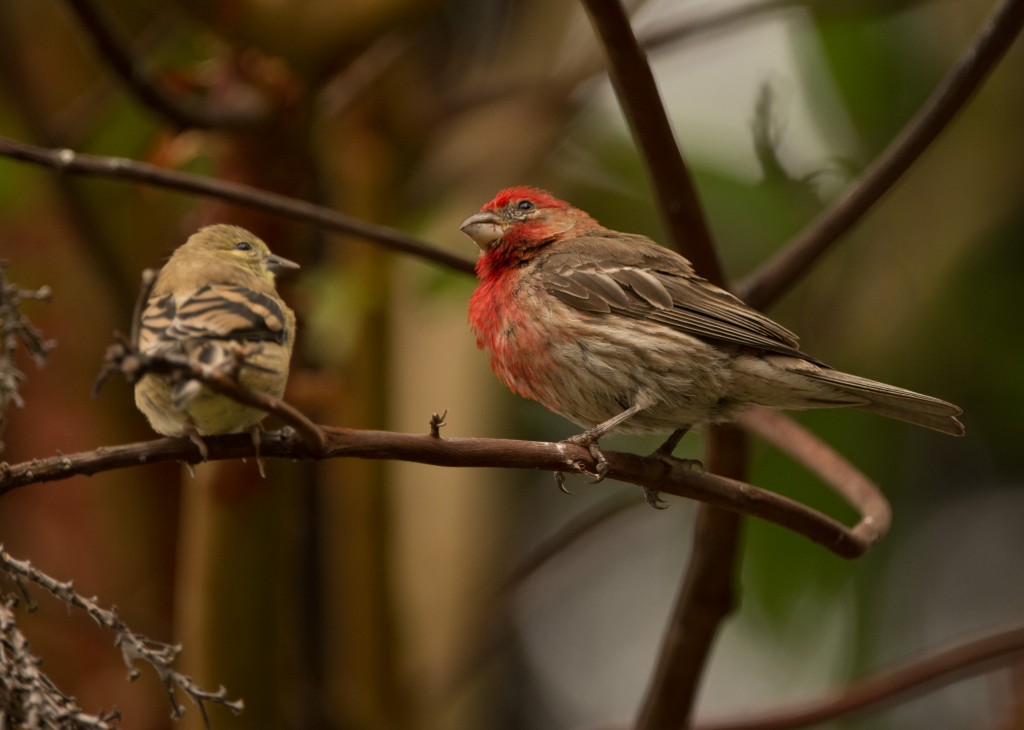
The young goldfinch leaned towards the House finch as if to beg food and the male House finch leaned towards it and threatened it with its beak. Immediately after the confrontation the House finch flew, and all the young goldfinches followed it. This is exactly the same exit from the yard the young goldfinches make with their parents. It’s as if the young goldfinches had imprinted on the House finch.
Another noteworthy event occurred on August 4 when three Eurasian Collared doves descended into the trees in the yard. They seemed very interested in going to the ground but never did. This may only be about the second appearance of these doves since we’ve lived here.
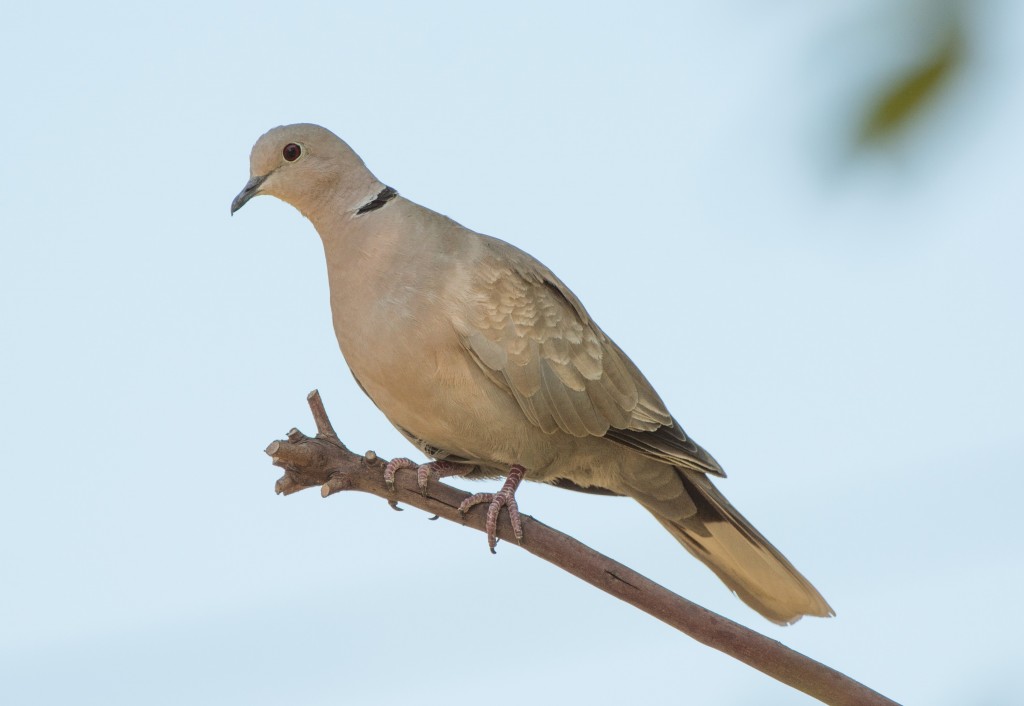
I managed another good photo of a male Downy woodpecker, probably the same one that appeared in my prior post. This time the woodpecker was perched on the edge of a rock bird bath we have.
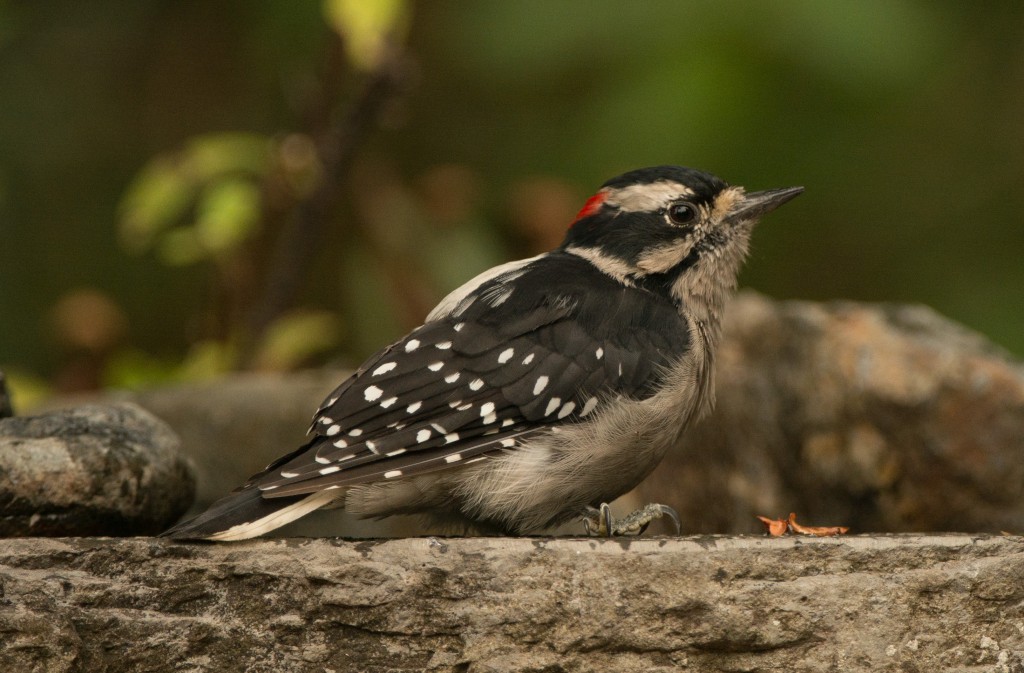
A European starling in the yard. I’ve been plagued by these for the past couple of months. During most of the year I have very few starlings in the yard, but when the young fledge I am absolutely overrun with starlings. They foul the water in the bird baths and, if I leave it out, cost me at least a suet cake a day. They’re finally beginning to taper off and it’s “good riddance”!
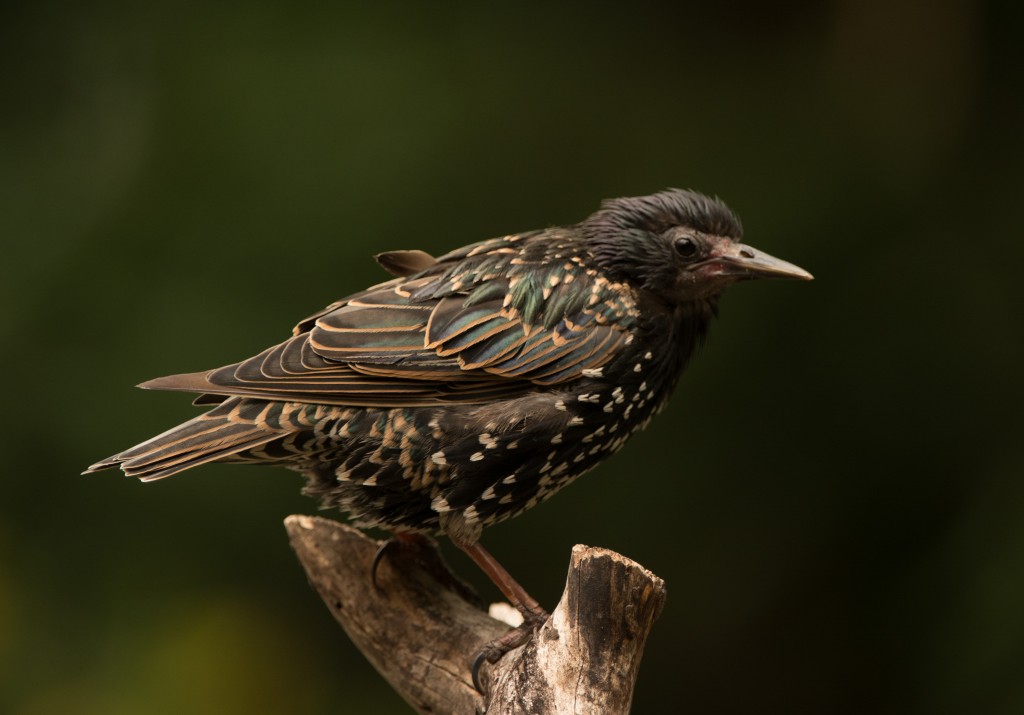
Here’s an interesting photo of a young male House finch. When the birds are very young it’s either difficult or impossible to tell the males from the females. But if you look closely at this bird you’ll see that some of the bird’s breast feathers are beginning to turn red, signaling that this is a male.
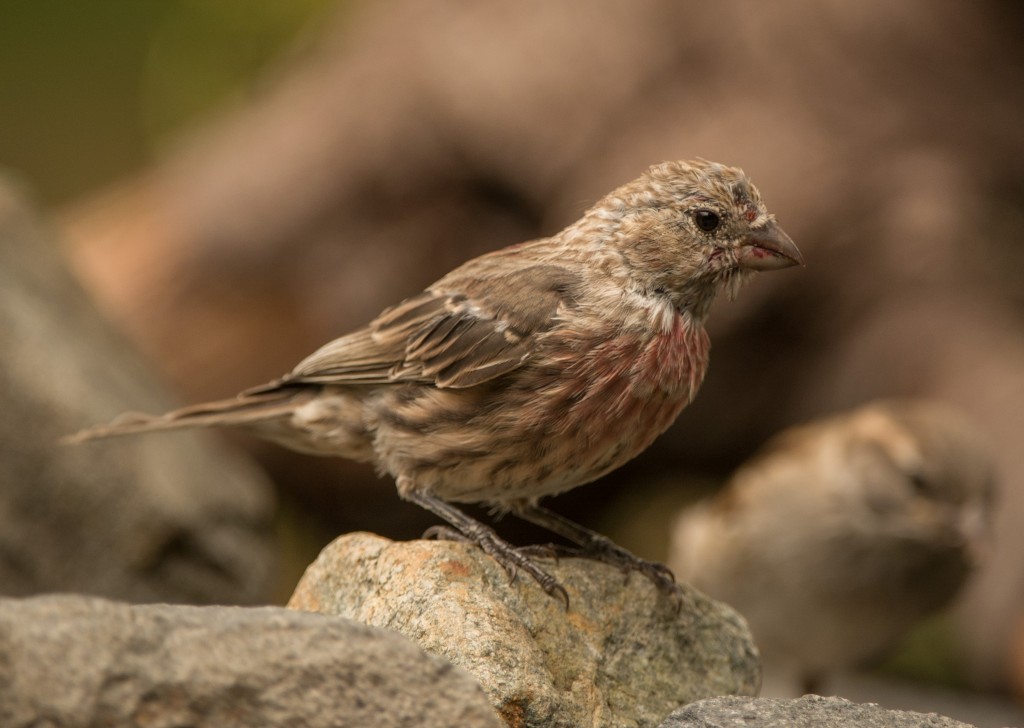
And to round out this post, a nice photo of a male American goldfinch…


